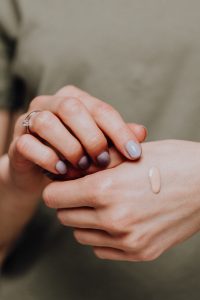Should You Wear Liquid or Cream Foundation?

Have you ever put on your foundation in the morning, only to have it slide right off by noon? Or worse, looked into a mirror to find that not only had it slid off, but it had also settled deep into your fine lines and wrinkles, making you look cakey.
We’ve all made the mistake of using the incorrect foundation, but luckily, there’s a solution. To choose the best foundation for your skin type and preferences, look no further.
You can also find guidance on brand websites by reading explanations on how different formulas work with various skin types. In this way, you can make an informed decision about which product is best suited for you specifically.
Differentiating Among the Main Skin Types
The term “skin type” is just a way of describing how your skin behaves when you don’t use very many products on it. In simpler terms, if you refrained from using skincare items for a while, would your skin tend to be more oily or dry? Would it need hydration?
There are four main types of skin recognized by experts.
Normal
Few people possess perfectly balanced skin that is neither too oily nor too dry. This type of skin usually feels comfortable, hydrated, and overall healthy.
People with normal skin don’t experience breakouts or sensitivity as often as those with other skin types. Even though it isn’t very common, some will have normal skin for their entire lives.
Oily
If your skin feels slippery or slick, it’s likely oily. People with this skin type typically have larger pores that are visible, and they might get blemishes or breakouts more often than others.
Even if people with oily skin use products made for their skin type, they may still have difficulty controlling the amount of oil produced.
Dry
Skin that never feels moisturized is commonly dry skin. If you think you may have dry skin, take notice of these signs: an itchy feeling, redness, flaking, or peeling.
People with dry skin typically also have smaller pores and can be more sensitive than other types.
Combination
The majority of people have combination skin, meaning some sections are dry, others are oily, and still others are normal.
Consequently, it can be tough to manage because the solutions to one issue usually cause another.
How to Determine Your Skin Type
To find out your skin type, follow these simple steps. Wash your face with a mild cleanser and pat it dry. Don’t use any other products on your skin for the moment.
After 30 minutes have passed, check to see how your skin feels.
Oily skin usually appears greasy or slick, while dry skin may feel tight and stretched. Normal skin is neither oily nor dry and feels comfortable. If your face has both oily and dry areas, you likely have combination skin.
What Other Skin Conditions Should I Be Aware Of?
Common skin problems can get in the way of you feeling confident with your makeup, so before you choose a foundation, take care of these other conditions.
They might not be different types of skin, but they’re still challenges that come up often enough to impact how your makeup looks.
Acne-Prone Skin
Although having oily skin does not mean you will develop acne, pimples are more likely to form if your skin produces excessive sebum.
Sebum is a natural oil produced by the body to lubricate and protect the skin. However, when sebum mixes with dirt or makeup, it can clog pores and lead to breakouts.
Hormonal changes during puberty often cause increased sebum production, resulting in more pimples for some people.
Mature Skin
By age 20, the majority of people see changes in their skin. The production of collagen and elastin- which help give skin its structure and keep it looking young- start to slow down.
Additionally, oil production may diminish, causing skin to feel drier than before. Finally, aging skin begins to reveal damage done by free radicals like sunspots or uneven texture/tone.
Sensitive Skin
Trying new products can be tough if you have sensitive skin. If your skin is easily irritated, turns red, or burns easily, then it might be classified as sensitive.
Having a better understanding of your skin type and conditions will help you choose the best foundation formula for your needs.

What Are the Benefits of Liquid Foundation
It’s the foundation you’ve always known. Liquid foundations vary in opacity, from sheer to full coverage, and are usually applied with a brush or beauty sponge.
Liquid Foundation Benefits
If you’re aiming for a natural look, liquid foundation is always a good choice—especially if you pick one with buildable coverage. This type of product lets you add sheer layers until you reach the level of opacity that suits your needs.
And if makeup isn’t your forte, no problem—liquid foundation is simple to use and can give even beginners the results they’re looking for.
Another perk of liquid foundation? It delivers a dewy finish that looks realistic (unlike some powder products that can leave your skin looking dry and cakey).
Plus, most formulas dry quickly after application, so you can easily layer on more coverage where needed without having to wait around forever for each coat to set.
Liquid Foundation Disadvantage
Formula foundations with silicone aren’t safe for your skin. Silicone is an ingredient in liquid foundation that gives it a smooth feel, but the barrier it creates against dirt and oil causes pores to trap them inside.
Not only this, but if a liquid foundation isn’t properly made for your skin type, it can seep into wrinkles and make you look older.
Choosing the Correct Liquid Foundation for Your Skin Type
All skin types, including oily skin, can use liquid foundation if you select a silicone-free formula that has ingredients beneficial to your skin.
That being said, those with oily complexions may find it more difficult to apply and wear liquid foundation without first using a primer.
A primer provides a barrier between your skincare and foundation, which not only keeps your makeup in place but also creates a smooth surface for uniform application.
- If you’re looking for a liquid foundation that is suitable for all skin types, give our full coverage liquid foundation a try. This foundation is naturally hydrating to the skin and packed with anti-aging antioxidants.
The combination of formulas and olive oil helps to restore the skin’s natural balance, providing moisture to dry areas while also absorbing any excess oil in oily areas.
Applying is easy! Here’s how:
The key to a natural-looking foundation is all in the application. Using a damp sponge, gently press the product into your skin in small circular motions, starting from the middle of your face and working outward.
For extra precision (and to avoid any harsh lines), use a beauty sponge with a fingertip-like design on the tip, like the 100% Pure Beauty Sponge.
What Are the Benefits of Cream Foundation
Although it has a thicker consistency, cream foundation doesn’t always provide heavier coverage than liquid foundation. But what it does mean is that the ingredients are usually more hydrating than some liquid formulas.
Even if you have oily skin, don’t write off cream foundation just yet. The key is finding the right formula with appropriate ingredients for your skin type.
Cream Foundation Benefits
Cream foundations offer a velvety-smooth finish and are easy to apply. They’re buildable and provide more coverage than liquid foundations, but with less weight.
Creams are great for evening out the look of skin tone, keeping skin hydrated, and achieving a slightly more matte finish than liquids usually can.
Cream Foundation Disadvantage
Cream foundations are usually thicker, so they take more time to blend. If you have trouble blending them evenly, use a foundation brush or beauty sponge.
Also, cream foundations that contain silicones can feel heavy and may clog your pores, so be careful of what ingredients are in the product.
Choosing the Correct Cream Foundation for Your Skin Type
Those with dry skin usually prefer cream foundation because it is rich and hydrates the skin luxuriously.
It is also a great solution for aging or sensitive skin, as the ingredients often contain skincare-like benefits that help support and soothe the tissue.
- This Cream Foundation is one product you should try. It provides medium to full coverage that looks natural on the skin and is formulated with oils, so it won’t clog your pores or leave you feeling like you have a lot of makeup on.
Applying is easy! Here’s how:
To achieve an even, smooth texture, apply cream foundation with a makeup brush. Allow the first layer to dry before adding more product if you desire increased coverage.
What You Need to Know About Foundation
Even if you don’t have a lot of knowledge about makeup, finding the perfect cosmetics for your skin is easy when you know what ingredients work best for it.




